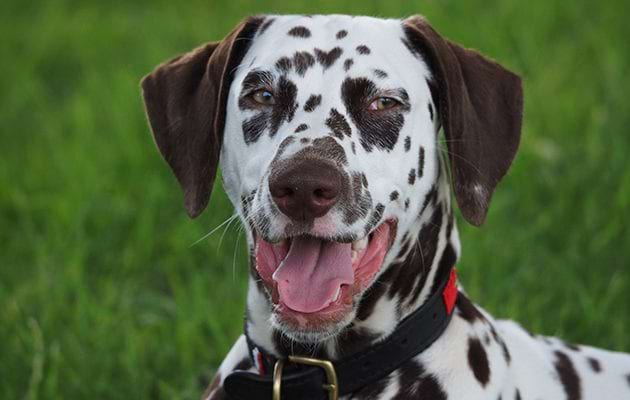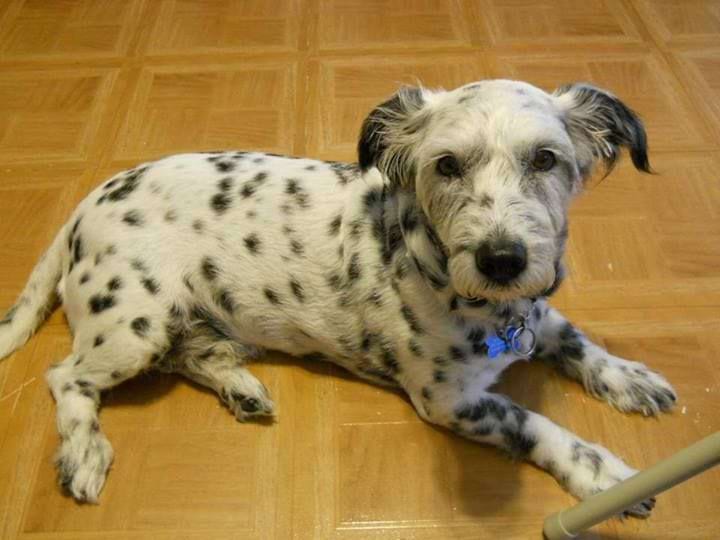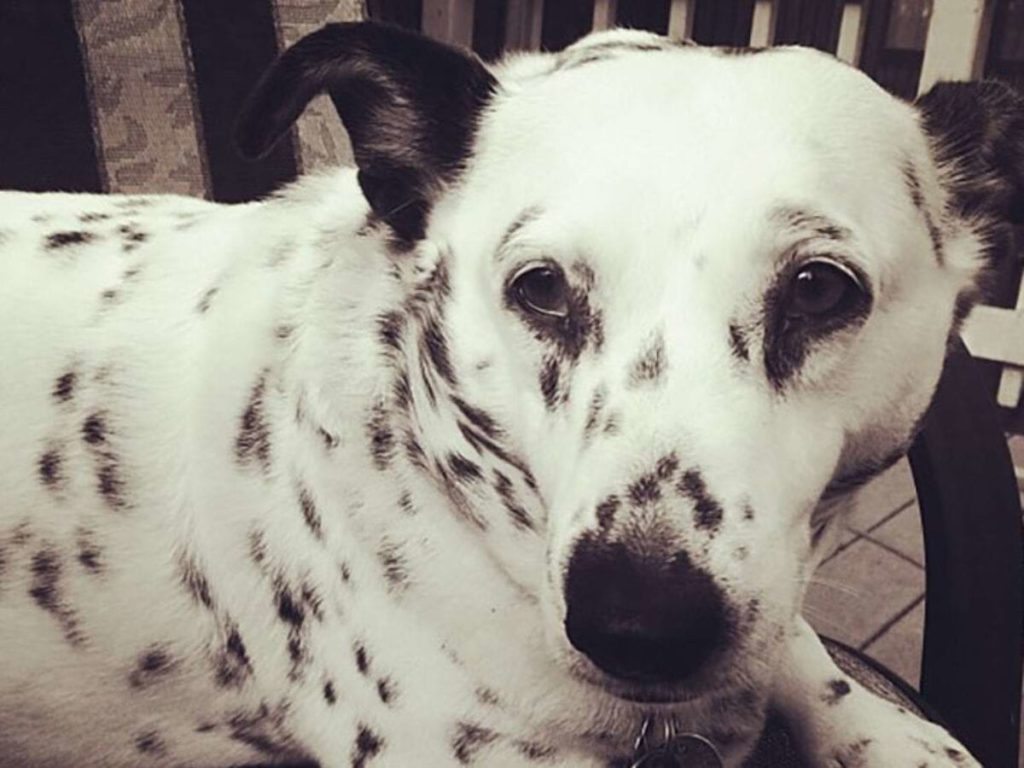The Corgi Dalmatian mix, also known as a Corgi Dalmation or a Dalcorgi, is an adorable and unique hybrid dog breed that has been gaining popularity in recent years.
As the name suggests, this breed is a result of breeding a Welsh Corgi with a Dalmatian, resulting in a small and charming dog that combines the best traits of both breeds.
Corgi Dalmatians are known for their friendly and affectionate personalities, as well as their loyalty and adaptability. They are also highly energetic and playful, making them an excellent choice for families or individuals looking for an active companion pet.
In this article, we will explore more about the characteristics, temperament, and care requirements of the Corgi Dalmatian mix, and what makes this breed so special.
Brief overview of Corgi Dalmatian Mix
| Weight: | 20 – 50 pounds |
| Height: | 10 – 15 inches |
| Lifespan: | 11 – 13 years |
| Coat Colors: | White, black (spotted), brown, fawn |
| Temperament: | Active, intelligent, sensitive, loyal, shy |
| Most Suitable For: | Active families with or without children, single individuals, not suitable for the elderly |
What is a Corgi Dalmatian Mix?
The Corgi Dalmatian Mix, often referred to as a Dalcorgi, is an intriguing blend of a male Corgi and a female Dalmatian. This unique crossbreed inherits a lively and distinctive personality, making it an engaging companion.
In the breeding process, it’s crucial to pair a male Corgi with a female Dalmatian for successful mating. Attempting the reverse pairing is impractical due to the size difference, as a female Corgi lacks the physical capacity to carry the larger hybrid offspring.
It’s worth mentioning that there are two main varieties of Corgis: the Pembroke Welsh Corgi and the Cardigan Welsh Corgi. These fluffy, pint-sized dogs share remarkable similarities, with the most noticeable difference being the length of their tails. Whether you choose a Pembroke or Cardigan Corgi, the result when crossed with a Dalmatian remains quite consistent in creating a Corgi Dalmatian Mix.
Parent Breeds of Corgi Dalmatian Mix
Origins and history of Corgi

Let’s delve into the fascinating history of the Corgi breeds. These little creatures originated in the Welsh villages of Pembrokeshire and Cardiganshire.
Their diminutive size, remarkable agility, stamina, and sharp intelligence made them exceptional cattle herders, capable of herding cattle by nipping at their heels.
Despite their proficiency in herding, the practice gradually lost favor among Welsh farmers. Nevertheless, the Corgi’s resolute spirit and charming personality saw them gain a new role as family pets and devoted companions, leading to their renewed popularity.
Since 1933, Corgis have enjoyed a close relationship with the British Royal family. It was Queen Elizabeth II who first fell in love with these adoring and loyal companions. From that point on, she has owned more than thirty Corgis, cementing their place in the Royal family’s history.
The Corgi’s popularity is not just confined to the UK, as they are becoming increasingly prevalent in the United States. These pooches have undergone numerous changes, transforming into some of the most adorable and endearing dogs around.
Their charmingly petite size and endearing personalities have made them one of the most beloved breeds globally, inspiring millions with their cute antics and adorable appearances.
Origins and history of Dalmatian

These Croatian canines are instantly recognizable due to their unique polka-dotted coat, which has made them a popular breed for centuries.
In the early days, Dalmatians were used to run alongside horse-drawn carriages, accompanying noblemen and royalty on their travels. They were more than just a fashion accessory, however, and were tasked with serving as guards to deter brigands and thieves.
As the years passed, Dalmatians accompanied fire brigades, becoming the quintessential American firefighting mascots. The release of the iconic Disney classic 101 Dalmatians further fueled their popularity, cementing their place in pop culture history.
Nowadays, Dalmatians are one of the most sought-after dog breeds in America. Their sharp intelligence, impressive athleticism, and unique appearance make them appealing companions.
While they still retain their natural instincts as protectors, most canine aficionados keep them as show dogs, mainly due to their magnificent coats. These striking creatures continue to enchant us, reminding us of the rich and colorful history of these beloved canine companions.
All Interested Facts you need to know
Are you ready for some surprising facts about the Corgi Dalmatian mix? Here are some little-known facts that you might find interesting:
1.They Have a skilled herders
The Corgi Dalmatian mix is a fascinating breed with many little-known facts. Did you know that Corgis are skilled herders and were originally bred to herd cattle? They might be small, but they are mighty and highly skilled at nipping at the heels of cattle to keep them in line.
Believed to have originated from Swedish Vallhunds or Schipperkes and Pomeranians around the 10th century, Corgis have been a long-time favorite of farmers and their families, serving both as a companion and a herding dog.
Nowadays, they are more popular as family dogs than working dogs, but they still successfully take part in AKC Herding competitions.
Whether your Corgi Dalmatian mix inherits more of its herding traits from the Corgi or Dalmatian parent, you can expect some herding and heeling attributes. So, if you’re looking for a loyal companion with a strong working background, the Corgi Dalmatian mix may be the right breed for you.
2.Dalmatians actually born without spots
That’s right – all Dalmatian puppies are born with pure white fur! It’s only over time that their spots begin to develop. In fact, most puppies will have most of their spots by the time they’re a month old.
But did you know that the precise color and pattern of the spots are dictated by the dog’s genes? Specifically, it’s the piebald gene that causes these unique markings.
Piebald genes usually cause patches of color, and unfortunately, they’re associated with an increased risk of hereditary deafness. Some owners even believe that dogs with sparser coverage of spots have a greater chance of being deaf.
Despite this, a perfect pattern for a Dalmatian consists of 3cm spots that are clearly defined and evenly distributed. The spots on the tail and legs should be slightly smaller than those on the main body.
And since every Dalmatian has a unique combination of spots, you can be sure that no two are the same!
3.Dalmatian’s original to breed as a coach dog
Dalmatians have had a plethora of nicknames over time, such as the Firehouse Dog or the Plum Pudding Dog, with a coat pattern resembling a spotted pudding.
However, the breed’s original purpose was to serve as a coach dog, earning it names such as the English Coach Dog, the Spotted Coach Dog, and the Carriage Dog.
While running alongside coaches, they would protect the horses from wild predators and guard the passengers and driver, making them excellent companions for coach workers.
Due to their history of running with coaches and carriages, Dalmatians still have a high energy drive, requiring plenty of exercise to stay healthy.
The Corgi Dalmatian mix will benefit from regular playtime, agility classes, or participation in other forms of canine sports.
Physical Appearance

The Corgi Dalmatian mix is a fascinating designer breed that showcases an interesting combination of traits from both parent breeds. This breed’s physical appearance can be traced back to the Pembroke Welsh Corgi and Dalmatian breeds, making it a medium-sized dog with an adorable, unique look.
When it comes to the Dalmatian Corgi’s appearance, there is an amalgamation of features from both parent breeds. The body shape and size are more reminiscent of the Pembroke Welsh Corgi, with its sleek and slender physique and long tail.
On the other hand, the classic white body with black spots is more reminiscent of the Dalmatian breed.
One distinctive feature of this breed is its ears, which are likely to be forward-facing and floppy, making them look even more adorable. Moreover, they have a slightly longer snout and fuller face compared to the Corgi, similar to the Dalmatian.
However, like all mixed-breed dogs, the physical appearance of the Corgi Dalmatian mix can vary greatly, making it difficult to pin down a standard look for this breed.
Size, height, and weight
This bizarre hybrid breed usually falls into the small to medium-sized category, which is perfect if you’re living in an apartment or a confined space.
| Size group | Small |
| Height | 10-15 inches |
| Weight | 20-50 pounds |
Coat colors and types
The coat colors of the Corgi Dalmatian mix – a game of chance that could result in a striking blend of genetics. But fear not, for the Dalmatian’s potent coat color genetics almost always guarantee a white base with black spots.
It’s a dream come true for anyone who fancies the Dalmatian’s coat but seeks a smaller companion.
Temperament and Personality
When it comes to the temperament and intelligence of the Corgi Dalmatian, there are a few things to consider. As a crossbreed, this designer dog inherits traits from both parent breeds, making it challenging to predict precisely how their temperament will turn out.
However, there are some general characteristics that one can expect from a Corgi Dalmatian.
For starters, the Corgi Dalmatian hybrid is an energetic dog. Both the Corgi and Dalmatian are high-energy breeds that require regular exercise to stay healthy and happy. So, expect your furry friend to have a lot of energy to burn off throughout the day.
In addition to being energetic, this breed is also smart and intelligent. Corgis and Dalmatians are both intelligent breeds, and their crossbreed offspring will likely inherit this trait. With proper training and socialization, the Corgi Dalmatian can become a well-behaved and obedient companion.
It’s worth noting that early socialization is crucial for this breed. Without proper socialization, they can develop anxiety around strangers, which can lead to behavioral issues.
By exposing them to different people, animals, and environments from a young age, you can help your furry friend become more comfortable in various situations.
Is Corgi Dalmatian Mix a good fit for families?
The Corgi Dalmatian crossbreed is an excellent companion for families! The Corgi and Dalmatian parent breeds are both known for their companionship, in addition to their primary jobs.
Corgis are herders, and Dalmatians were coach dogs, but both are loyal and loving to all members of the family, no matter their age.
However, keep in mind that the Corgi has a tendency to nip at the heels of livestock, which can translate to children as well. So, early training is crucial to avoid any issues, and socialization is necessary to ensure the dog is comfortable with strangers.
Do Dalmatian corgis get along with other pets?
Yes, Dalmatian Corgis generally get along with other pets.
These mixed breed dogs tend to be safe around smaller animals like cats or rodents. However, it’s essential to exercise caution when introducing your Dalmatian Corgi to new non-canine companions, as each dog’s temperament can vary. It’s always better to be safe and supervise their interactions.
Is Corgi Dalmatian Mix friendly?
Yes, the Corgi Dalmatian Mix is generally friendly.
However, it’s essential to understand that this mix may exhibit some initial apprehension, particularly around unfamiliar people or dogs, due to the influence of Dalmatian genetics.
Dalmatians can be a bit reserved at first. But with time and proper socialization, your pet is likely to become more comfortable and outgoing, making new friends along the way. So, while they may start off a bit cautious, they tend to be friendly and sociable once they warm up to others.
Training
Training Corgi Dalmatian Mixes is a breeze, but it’s best to start early. They’re easy to train, but owners need to give them a reason to care. The breed is sensitive and doesn’t respond well to harsh discipline.
Corgis are also herding animals. They’ll treat the family as their herd and try to control them in subtle ways, such as barking or nipping at their ankles. It would be best to discourage this behavior early to prevent it from becoming a permanent habit.
Formal obedience classes are available everywhere, and they may come in handy if you want your pet to behave better.
Exercise Requirements
The Corgi Dalmatian Mix is an energetic breed, and they should never stay alone indoors for long periods. They need an hour of daily walks and play sessions to keep them from becoming hyperactive. If your children are old enough, these canines will get plenty of exercise playing with them.
A bored canine is problematic, and the Corgi Dalmatian Mix can raise all sorts of trouble if he doesn’t get to spend his excess energy. Excessive circling, barking, acting jumpy, biting, and chewing on shoes and other household items are typical signs of boredom and pent-up energy.
Grooming and Cleaning
Get ready for your furry friend to shed a lot of hair, as Corgi Dalmatian mixes are frequent shedders. Daily brushing is necessary to minimize the amount of hair that the dog sheds, which keeps them feeling comfortable and looking neat.
It’s important to trim your dog’s nails every two months, but if they don’t walk on concrete or other abrasive surfaces, you may need to trim them more often. Start nail clipping when your dog is young so that they get used to it, and be careful not to cut too low, which could cause pain and bleeding.
Begin teeth cleaning when your dog is young to prevent dental decay and painful dental problems. Aim to clean their teeth at least three times a week to ensure that they maintain healthy teeth and gums.
Are Corgi Dalmatian Mix hypoallergenic?
No, the Corgi Dalmatian Mix is not hypoallergenic.
This mix has a thick and dense coat that sheds consistently throughout the year, making them more likely to trigger allergies in sensitive individuals. Unlike hypoallergenic breeds like Poodles, which have hair instead of fur and produce fewer allergens, the Corgi Dalmatian Mix is not among the low-allergy options.
If you have allergies and are thinking about getting this breed, be prepared to take extra precautions to manage your allergy symptoms effectively. Regular grooming and cleaning can help mitigate the impact of allergens in your home.
Food and Diet
The Corgi Dalmatian Mix has specific food and diet requirements, and owners need to pay attention to what and how much they feed their furry friend. Generally, 1.5 cups of dry food per day is enough, but this may vary depending on your dog’s weight, health, and activity levels.
As with many dog breeds, Corgi Dalmatian Mixes can quickly gain weight, so it’s important to monitor their food intake and avoid overfeeding. If you opt for wet food, be aware that it has a shorter shelf life and should not be left out for too long.
To maintain a healthy weight, it’s recommended to split the daily food intake into two or three meals and keep to a feeding schedule. If you offer both wet and dry food, adjust the amount of each accordingly. By following these guidelines, you can help ensure that your Corgi Dalmatian Mix stays happy, healthy, and well-fed.
Common Health Issues
The Corgi Dalmatian Mix breed generally has good health, but it’s important to be aware of potential health issues that may arise from their parent breeds. Health screenings of the parents before breeding is recommended to minimize the risk of genetic diseases.

1. Risk of Deafness
Did you know that the Corgi Dalmatian Mix breed may have an increased risk of deafness due to the genes that produce their distinct Dalmatian pigment? Yes, that’s right! While not all Corgi Dalmatian Mix dogs will develop deafness, it’s important for owners to be aware of this potential health issue and to have their pets regularly checked by a veterinarian.
2. Epilepsy
Epilepsy is a convoluted and hereditary neurological disease that can lead to seizures and affect the brain of your furry friend. It’s an unfortunate condition that may be passed down to the Corgi Dalmatian Mix offspring if their parents have been diagnosed with it.
3. Kidney stones
Bladder stones are a common health issue for Dalmatians, and their Corgi Dalmatian Mix offspring may also be at risk. The stones form when urine becomes overly concentrated and solidifies into sharp fragments, which can obstruct the urethra and cause discomfort.
4. Intervertebral Disc Disease ( IVDD )
Intervertebral Disc Disease, a spinal disorder, is a common issue for the Corgi Dalmatian Mix, as both parent breeds are predisposed to it. The condition is a result of the discs between the vertebrae drying out and cracking, leading to decreased space between the bones. The outcome can be spinal cord damage, limited mobility, and pain.
5. Heart Issue
Heart disease is a common health issue among the Corgi Dalmatian Mix. It includes inherited heart defects and cardiomyopathy. If your furry friend is diagnosed with any of these heart problems, you may have to modify their diet and give them medication to enhance their heart function.
6. Hip Dysplasia
Hip dysplasia is a prevalent developmental ailment among dogs that affects the hip joints. This condition occurs when the hip joints don’t fit together correctly, causing the joints to loosen and become unstable. As a result, it can cause discomfort for your furry friend and may even progress into arthritis as they age.
7. Diabetes
Diabetes, a metabolic disease, is common among dogs that develop a Corgi Dalmatian mix. When a pup is affected by this disease, the body can’t produce enough insulin, leading to high sugar levels in the bloodstream. Insufficient exercise and a poor diet are the leading causes of diabetes in dogs.
8. Hyperuricemia
The Corgi Dalmatian Mix is predisposed to hyperuricemia, which is a condition that leads to high levels of uric acid in the bloodstream. This condition can result in the formation of kidney stones and gout – a painful inflammatory condition that affects the joints.
9. Von Willebrand’s disease
Von Willebrand’s disease, a bleeding disorder that affects blood platelets, is a common ailment that strikes young canines, often causing nosebleeds in puppies.
10. Laryngeal paralysis
There’s yet another health concern that your furry Corgi Dalmatian Mix may face! It’s called laryngeal paralysis, and it’s no joke. This condition makes it tough for your doggy’s vocal cords to move freely, causing all sorts of breathing difficulties.
So, if you notice that your pooch is having a hard time breathing, or if he’s making strange noises when he tries to bark, it’s time to get him checked out by a vet. Don’t delay – your pup’s health is nothing to mess with!
How long Does Corgi Dalmatian Mix Live?
This breed can live between 10 to 15 years, which is just a bit longer than their purebred parents. So, make sure you give them all the love and care they need to live a happy and healthy life for as long as possible!
How Much Is The Price of Corgi Dalmatian Mix?
On average, You can expect to pay between $300 to $700 for a puppy, which is quite reasonable.
Is Corgi Dalmatian Mix Right For Me?
- Are you ready to handle the energy and exercise needs of a Corgi Dalmatian Mix?
- Can you dedicate enough time to train them properly and avoid behavioral issues?
- Do you have children that are old enough to handle this energetic pup?
If you can confidently answer “yes” to these questions, then a Corgi Dalmatian Mix might be the right fit for you. However, if you can’t commit to providing the necessary care and attention, then it might be best to consider a different breed that’s more suitable for your lifestyle.
List of dogs that are similar to Corgi Dalmatian Mix
- Corgi-Blue Heeler Mix
- Corgi-Yorkie Mix
- Corgi-Poodle Mix
- Corgi-Boxer Mix
- Corgi-Pomeranian Mix
- Dalmatian-Pitbull Mix
- Dalmatian-Husky Mix
- Dalmatian-Poodle Mix
- Long-Haired Dalmatian
Frequently Asked Questions
1.Is the Corgi Dalmatian Mix an easy breed to train?
Well, given their boisterous temperament, they can be quite difficult to handle. They tend to be easily distracted and often struggle to follow commands, which can be frustrating for their owners.
However, with consistent training and positive reinforcement techniques, these issues can be addressed effectively. Instead of scolding them, try rewarding good behavior to encourage their obedience.
2.Do Corgi Dalmatian Mix Shed A Lot?
Yes, the Corgi Dalmatian Mix does shed a lot.
This shedding propensity can be attributed to the combination of the Corgi’s double coat and the Dalmatian’s short, dense fur. This mix tends to experience a moderate amount of shedding throughout the year. If you’re someone who is looking for a hypoallergenic breed or is sensitive to pet hair, it’s important to be aware that the Corgi Dalmatian Mix may not be the best choice for you.
However, shedding shouldn’t deter you from considering this adorable breed as a pet. Regular weekly brushing sessions can help keep their coat smooth and minimize shedding, making it more manageable for pet owners who don’t mind a bit of grooming to keep their furry friend looking and feeling their best.
3.How much does Corgi Dalmatian Mix adult get ?
The average weight of a Corgi Dalmatian mix ranges between 20 and 50 pounds and the height of 10 and 12 inches!
Conclusion
In conclusion, the Corgi Dalmatian mix is a delightful and unique hybrid dog breed that has captured the hearts of many dog lovers. With their friendly personalities, loyalty, and high energy, they make great companion pets for families or individuals who lead an active lifestyle. Corgi Dalmatians are known for their adaptability, making them well-suited for a variety of living situations.
However, it is important to remember that all dogs, including Corgi Dalmatians, require proper care and attention to thrive. If you are considering adding a Corgi Dalmatian mix to your family, be sure to do your research and provide them with the love, care, and attention they need to lead happy and healthy lives.

Pingback: Sable Corgis 101: Everything You Need to Know 2023
Pingback: Corgi Yorkie Mix: Everything You Need to Know 2023
Pingback: Blue Merle Corgi: Exploring the Fascinating World of Corgis 2023
Pingback: Corgi Pug Mix 101: Everything You Need to Know 2023
Pingback: Boxer Corgi Mix: Powerful Love in a Small Package! 2023
Pingback: Corgi Poodle Mix: Surprising Facts You Need to Know 2023
Pingback: Blue Heeler Corgi Mix: Exploring the Fascinating World 2023
Pingback: Corgi Pomeranian Mix: Powerful Truths to Touch Your Heart 2023
Pingback: Fluffy Corgi: Unveiling the Beauty of this Rare Breed 2023
Pingback: Are Corgis Hypoallergenic? Consider for Your New Canines 2023
Pingback: Do Corgis Shed? Helpful Tips You Need to Know 2023
Pingback: Dalmatian Husky Mix: Interesting Facts You Need to Know 2023
Pingback: Long-Haired Dalmatian: Majestic Beauty of a Rare Coat 2024
What useful topic
This topic is simply matchless :), very much it is pleasant to me.